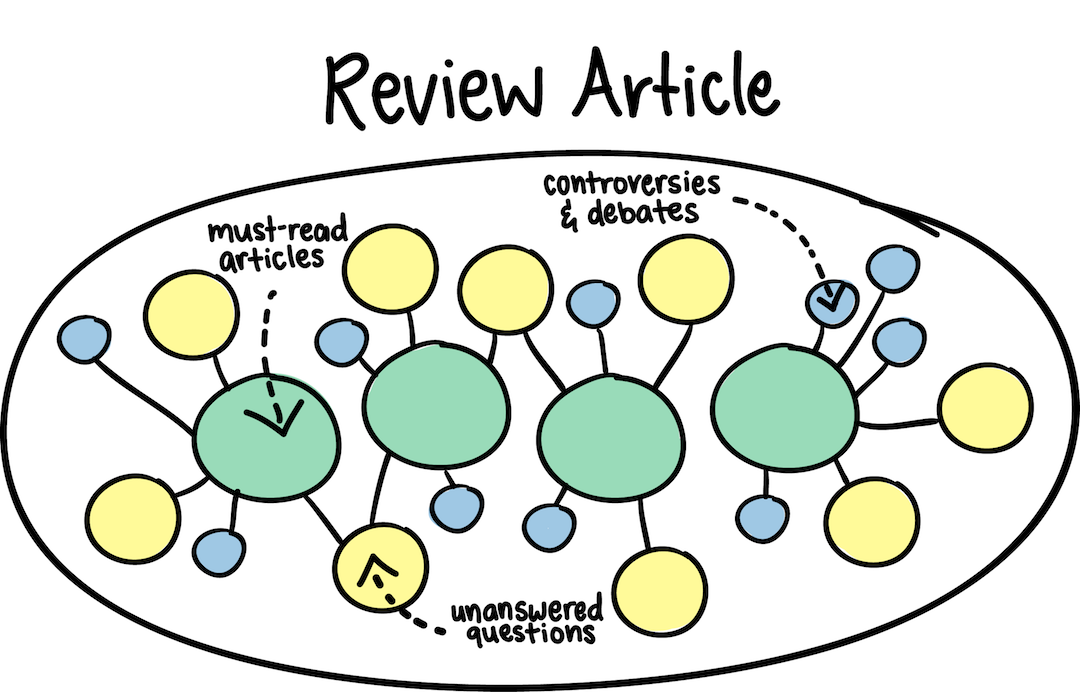
A review article, also called a literature review, is a survey of previously published research on a topic. It should give an overview of current thinking on the theme and, unlike an original research article, won’t present new experimental results.
The objective of a literature review is to provide a critical evaluation of the data available from existing studies. Review articles can identify potential research areas to explore next, and sometimes they will draw new conclusions from the existing data.
Contents
What is the difference between a research article and a review article?
Here are 8 key things to consider when writing a review article:
1. Check the journal’s aims and scope
Make sure you have read the aims and scope for the journal you are submitting to and follow them closely. Different journals accept different types of articles and not all will accept review articles, so it’s important to check this before you start writing.
2. Define your scope
Define the scope of your review article and the research question you’ll be answering, making sure your article contributes something new to the field.
As award-winning author Angus Crake told us, you’ll also need to “define the scope of your review so that it is manageable, not too large or small; it may be necessary to focus on recent advances if the field is well established.”
3. Finding sources to evaluate
When finding sources to evaluate, Angus Crake says it’s critical that you “use multiple search engines/databases so you don’t miss any important ones.”
For finding studies for a systematic review in medical sciences, read advice from NCBI.
4. Writing your title, abstract and keywords
Spend time writing an effective title, abstract and keywords. This will help maximize the visibility of your article online, ensuring the right readers find your research. Your title and abstract should be clear, concise, accurate, and informative.
For more information and guidance on getting these right, read our guide to writing a good abstract and title and our researcher’s guide to search engine optimization.
5. Introduce the topic
Start with an overview of the topic and give some context, explaining why a review of the topic is necessary. Gather research to inform your introduction and make it broad enough to reach out to a large audience of non-specialists. This will help maximize its wider relevance and impact.
Don’t make your introduction too long. Divide the review into sections of a suitable length to allow key points to be identified more easily.
6. Include critical discussion
Make sure you present a critical discussion, not just a descriptive summary of the topic. If there is contradictory research in your area of focus, make sure to include an element of debate and present both sides of the argument. You can also use your review paper to resolve conflict between contradictory studies.
This can include making suggestions for future research on the topic as part of your conclusion.
8. Use a critical friend
One last check. Always perform a final spell and grammar check of your article before submission.
You may want to ask a critical friend or colleague to give their feedback before you submit. If English is not your first language, think about using a language-polishing service. Find out more about the Taylor & Francis Editing Services.
To get the latest news, insights, tips and more straight to your inbox, sign up for the Taylor & Francis Insights newsletter.
Review article checklist
Complete this checklist before you submit your review article:
- Have you checked the journal’s aims and scope?
- Have you defined the scope of your article?
- Did you use multiple search engines to find sources to evaluate?
- Have you written a descriptive title and abstract using keywords?
- Did you start with an overview of the topic?
- Have you presented a critical discussion?
- Have you included future suggestions for research in your conclusion?
- Have you asked a friend to do a final spell and grammar check?
[“source=authorservices”]








